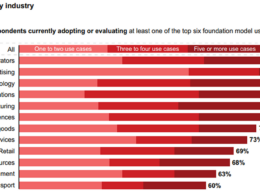health transformation
knowledge portal
Joaquim Cardoso MSc
Founder and Chief Research and Strategy Officer (CRSO) Editor in Chief
April 5, 2024
What is the message?
Nvidia’s transformation from a graphics card provider to a tech powerhouse has been swift, driven by the surge in artificial intelligence (AI) demand.
Recent earnings reports showcased Nvidia’s dominance in the AI infrastructure market, with staggering revenue and profit increases, propelling it to become one of the world’s most valuable companies.
Despite this success, questions linger about the sustainability of Nvidia’s growth trajectory and its ability to weather potential challenges.

This summary is based on the article “AI boom catapults Nvidia into tech’s big league” published by Financial Times and written by Richard Waters on February 23, 2024.
What are the key points?
AI Boom: Nvidia’s remarkable earnings growth is attributed to the AI boom, with its chips widely used for training and running large language models. Data center sales, primarily driven by AI demand, skyrocketed, highlighting Nvidia’s pivotal role in shaping the AI landscape.
Market Valuation: Nvidia’s market valuation surpassed $2 trillion, cementing its position as a tech giant alongside Apple and Microsoft. However, soaring stock prices raise concerns about market expectations and vulnerability to downturns.
Competition and Risks: Despite its current dominance, Nvidia faces risks from cyclical demand patterns and intensifying competition. Rivals like AMD and cloud giants are entering the AI chip market, challenging Nvidia’s market share and pricing power.
What are the key statistics?
Nvidia’s data center sales increased fivefold year-over-year, with after-tax profits exceeding $12 billion.
The company’s market valuation reached $2 trillion, making it the third most valuable tech company globally.
AMD predicts the AI chip market to reach $400 billion annually by 2027, indicating substantial growth potential.
Nvidia’s gross profit margin surged from 57% to 73% in the past year, reflecting its pricing leverage.
What are the key examples?
Jensen Huang, Nvidia’s CEO, forecasts a significant overhaul of data center equipment to accommodate the AI era, estimating a $2 trillion market opportunity.
Competitors like AMD and cloud giants Microsoft, Amazon, and Google are developing AI chips to challenge Nvidia’s dominance.
Conclusion
Nvidia’s ascension into the tech elite underscores the pivotal role of AI in shaping the future economy.
While its current market dominance appears formidable, the company faces challenges from cyclicality, competition, and evolving market dynamics.
Success in maintaining its position will hinge on sustained innovation, navigating market uncertainties, and delivering value to customers in the rapidly evolving AI landscape.
To read the original publication, click here.












